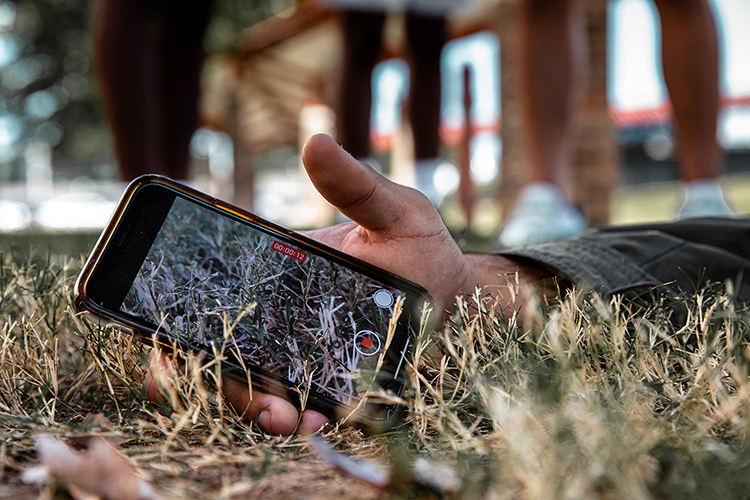Challenged to the limit
Risking it all for the views and likes
Photo by Caden Rainwater
There are a multitude of dangerous and life threatening challenges that people have performed on the internet.
November 7, 2020
The internet is known for bringing people together to do wacky and crazy challenges to entertain the masses. Some of the challenges are meant to raise awareness and money for causes, such as the famous ALS Ice Bucket Challenge. Most of these challenges are simply for the laughs and just being silly, though with almost every good thing, there is a bad.
There are a multitude of dangerous and life threatening challenges that people have performed on the internet. These unsafe and sinister challenges infect the internet, putting the lives of those who perform them in danger. Though it isn’t just the performers being hurt, it is hurting the viewers who see the videos and think of carrying out these challenges themselves. These are some of the most popular challenges found on mainstream media:
Cinnamon challenge: The most popular of the unhealthy challenges is the cinnamon challenge. This is when participants try to eat a spoonful of ground cinnamon. The goal is to keep the cinnamon in one’s mouth for 60 seconds without drinking anything.
Health risks: This may cause choking, aspiration, pulmonary damage, clogged airways, scarring of the lungs, burning and irritation of nasal tissue, vomiting, collapsed lungs and progressive lung damage.
Outlet challenge: First performed on the app TikTok, the outlet challenge involves its participants partially plugging a phone charger base into a wall outlet. The participants then proceed to touch the exposed piece of the phone charger prongs or the USB port of the charger with a penny.
Health risks: The spark emitted from the outlet causes damage to the electrical system of the area in which the challenge was performed, electrical fires and electrocution of the participants.
Choking challenge: A challenge that can be played with or without friends is the choking challenge. This is when either oneself or a friend chokes a person to the point of almost unconsciousness, then lets go to give the recipient a feeling of adrenaline.
Health risks: Strangulation causes loss of consciousness, welts and bruises on the windpipe and headaches.
Fire challenge: In this challenge, the player would cover a part of their body in a flammable liquid and set that part of their body on fire. The goal is to see how long someone can last before putting out the flame. Though, a lot of the time, stunts like these are either faked or performed by professionals, those who don’t fall into either of those categories pay the price.
Health risks: This can cause second to third degree burns on the participant and irreparable scarring.
Tide-pod challenge: The Tide-pod challenge is widely known for its widespread participation and the health complications that it caused its victims. The challenge itself only involves the performers eating the laundry detergent packet, Tide-pods. Though the colorful packets may seem appealing to the eye, especially to young children and vloggers, ingesting them comes with a laundry list of repercussions.
Health risks: This causes burning of the mouth and eyes, loss of consciousness, seizures, acidic burns to the esophagus and lungs, vomiting and neurological damage.
Vacuum challenge: The vacuum challenge is an internet challenge that consists of putting a person, usually a child, into a large garbage bag. They then tie the bag to where no air escapes. Using a vacuum hose, the air is sucked out of the bag completely. The danger presented to the player by this simple task can be monumental.
Health risks: This causes strangulation, loss of consciousness and bruising of the windpipe.
Though all of these challenges vary from ingesting chemical soap to lighting someone on fire, they all have one sharp underlying trait: terrible danger. Though they seem like fun and games, challenges like these can cause people to lose their lives. Doing five minutes of research on Google can save someone’s life. The likes, shares, comments and five minutes of fame from one video are never worth a life.
















